HTC One (M8) vs HTC One (2013)
Which will be your final One?
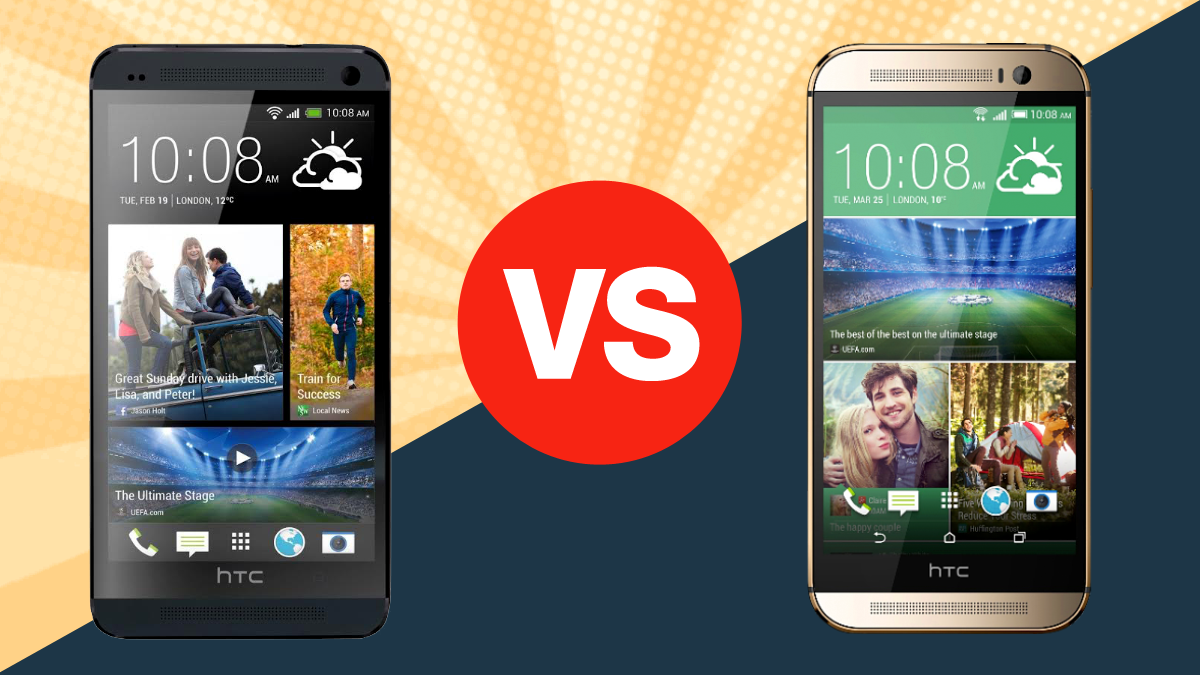
You've walked into your local phone store. You've heard about them fancy-dan HTC phones, but you're greeted suddenly with two models.
Both are metal. Both have a fancy overlay with something called Blinkfeed and massive speakers above and below the screen. You quickly discern, using your smartphone detective powers, that one is the HTC One from last year, and the other is the all new HTC One (M8).
Suddenly you're all at sea. You can see there's a price disparity, but man, they both look good. How will you ever work out which one is best for you? DILEMMA, right?
Luckily, you were smart. You either read up ahead of time, or you're in the shop right now reading this on the phone from 2011 that you've finally decided to upgrade. Either way, mop your brow and let us guide you through the process of deciding whether you need the latest HTC One (M8) or whether the still-excellent model from 2013 can do a job for your smartphone life (and save some cash too).
Key features
The phrase 'same but different' has never been so relevant to a phone comparison, as HTC has managed to achieve the feat of keeping most of the heritage of the One and yet update it enough so the One (M8) feels like an entirely new device.
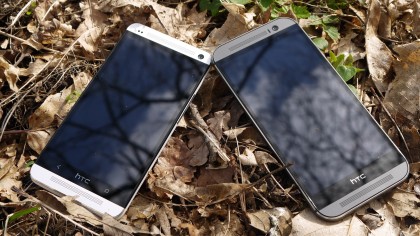
With that in mind, the key features are largely the same, although upgraded in nearly every way. For instance, the Boomsound speakers are present (and prevalent) on both phones, but the newer version is able to pump out sound 25% louder than its predecessor.
It can also manage sound better thanks to a powerful digital signal processing chip, which means it can allow improved mid range and treble tones while making sure everything isn't distorted by bass.
Get daily insight, inspiration and deals in your inbox
Sign up for breaking news, reviews, opinion, top tech deals, and more.
The design between the two devices on show here is both stark and similar at the same time. Both share the same heritage in terms of construction, with a single block of aluminium leading to the final result.
However, the two phones are markedly different in the hand, and that's down to the HTC One (M8) being made of 30% more metal than its predecessor, coming in at over 90% compared to just 70%.
The new One is so tightly packed that it has all the components put in from the front during manufacture - yet it still adds in a microSD slot where the original version was devoid of such expansion.
This is going to be a big deal to a lot of users, although the way in which it's accessed is not so simple: you'll need the same SIM tool in the box to get to the expandable memory as you will the now-smaller nanoSIM.
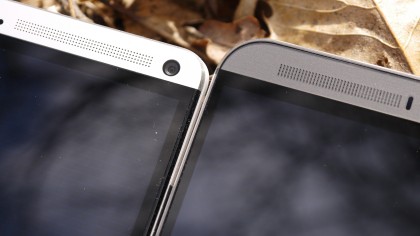
(Yes, you'll need to get a new SIM card if you're not upgrading from a newer iPhone).
This isn't a huge deal, as the chances are most people will actually only plug in a new memory card once or twice during the lifetime of the phone (and you can upgrade it to 128GB) and it's a good addition to have.
In terms of size, the new HTC One (M8) is taller than last year's version to accommodate the 5-inch screen, which is up from the 4.7-inch option from the year before. It's not a big deal, but will need a slightly longer thumb (or more palm jiggling) to get to the top of the screen.
One area that it's great to see HTC has made an improvement is with the buttons on the top and side of the device - while last year's model had very little travel, the new One (M8) has volume and power keys that are excellent to use and very easy to find without looking.
The headphone port has been moved to the bottom of the phone though - this is annoying for some, who think it's just fine where it is (and offers easier access to the volume keys) but others will appreciate being able to remove the phone from the pocket a little easier when listening to tunes.
Side by side there's no doubt that the new HTC One (M8) has the more impressive and refined design of the two devices - however, the older model is still impressive and shouldn't be discounted just because it uses less metal.
Screen
We've just touched on the screen specs above, but it's worth talking through the differences here in a little more detail.
For start, the size of the display has been increased to a five inch screen, up fro the 4.7-inch option on the 2013 model. While the resolution hasn't improved, with both still rocking a Full HD 1080p display, the overall effect isn't diminished, and the new model actually offering a slightly brighter and more vivid display.
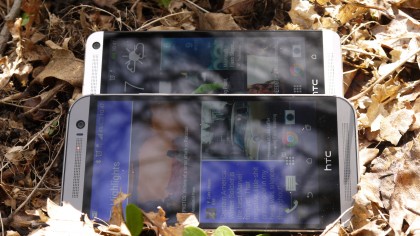
Both are Super LCD3, with HTC one of the only manufacturers to use such technology, but it's easily the equal of the Super AMOLED on the Samsung Galaxy range (although not in colour saturation) and is only bettered (possibly) by the excellent screen on the LG G2.
CPU and RAM
Here's something that will fly a little under the radar, but the chipset in the HTC One (M8) is a very strong option indeed.
The new phone brings the Qualcomm Snapdragon 801 variant, which is great news for a number of reasons. The obvious one is it's faster, but in truth things go a little deeper than that.
While yes, the HTC One (M8) is so much slicker under the finger than last year's model, it's in areas like battery life and camera processing where the enhancements are obvious.
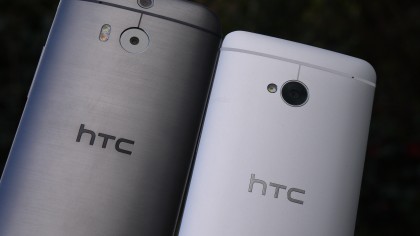
We'll come onto the power management in another section, but trust us when we say the HTC One (M8) can last a lot longer with the Snapdragon 801 compared to the Snapdragon 600 used in last year's model.
Both are packing 2GB of RAM, which is more than enough for a phone of this quality, and allows for all the heavy lifting you'd expect.
The new HTC One (M8) is faster at processing photos and streaming movies from online too, as well as pumping content out to a larger display, and this is all down to the upgrade in the CPU and RAM department.

Gareth has been part of the consumer technology world in a career spanning three decades. He started life as a staff writer on the fledgling TechRadar, and has grew with the site (primarily as phones, tablets and wearables editor) until becoming Global Editor in Chief in 2018. Gareth has written over 4,000 articles for TechRadar, has contributed expert insight to a number of other publications, chaired panels on zeitgeist technologies, presented at the Gadget Show Live as well as representing the brand on TV and radio for multiple channels including Sky, BBC, ITV and Al-Jazeera. Passionate about fitness, he can bore anyone rigid about stress management, sleep tracking, heart rate variance as well as bemoaning something about the latest iPhone, Galaxy or OLED TV.